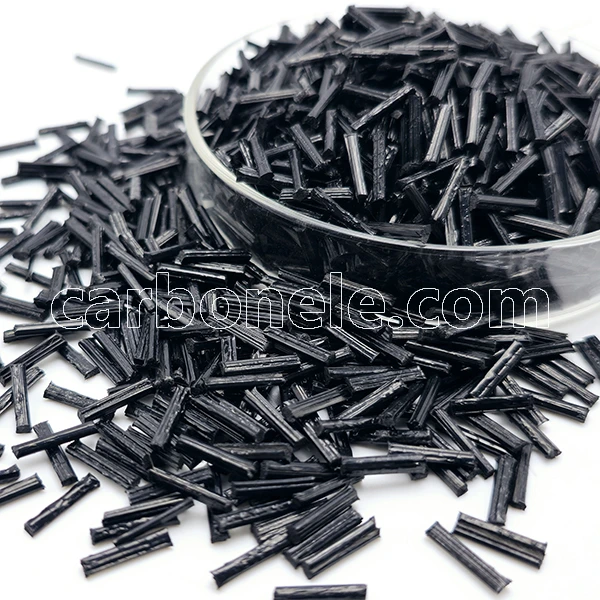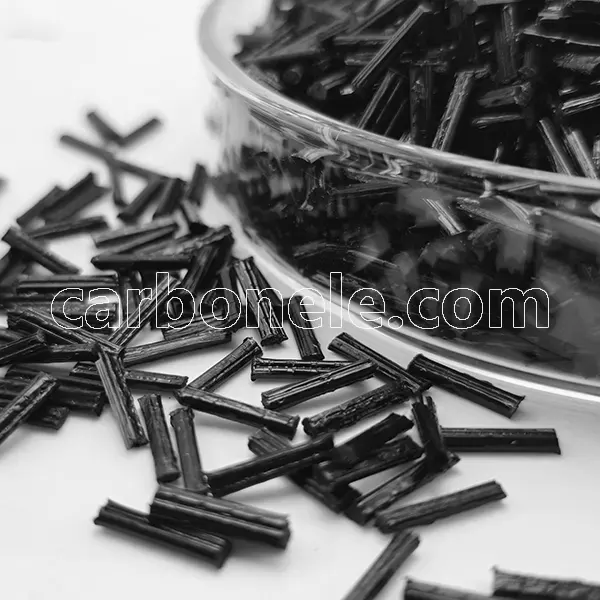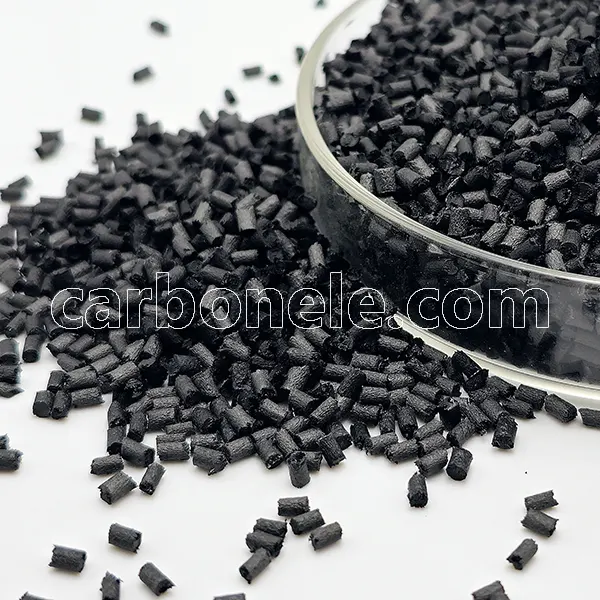
The Great Performance Of PA66 LCF In Demanding Surroundings - Carbon Fiber Compounds Manufacturer | Supplier
Composite materials have drawn a lot of interest in the area of materials research because of its unique mix of qualities and extensive use possibilities. Gradually rising as the new preferred kind of high-performance composite material is PA66 LCF. Its performance in recycling, cost-effectiveness, and hostile surroundings draws great attention in addition to having the traits of low weight, high strength, heat resistance and chemical corrosion resistance that conventional materials lack.
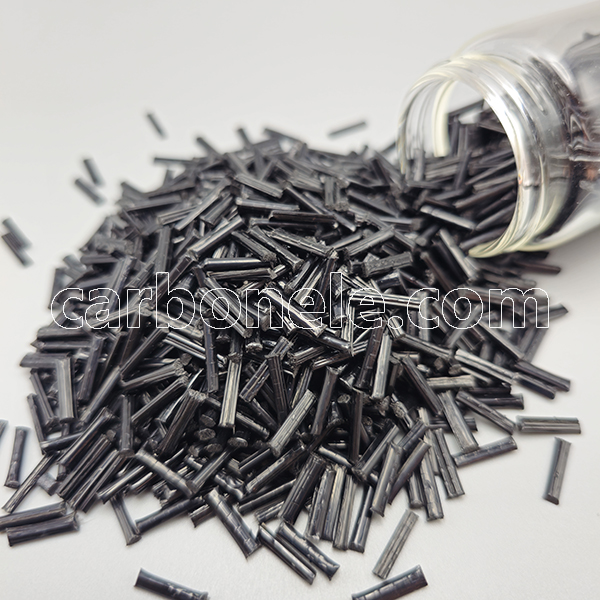
PA66 LCF30 30% carbon fiber nylon
Are PA66 LCF recyclable?
High-performance composite material PA66 LCF (long fiber reinforced polyamide 66) has numerous outstanding qualities not possible with conventional materials. About its recyclability, industry insiders and environmental specialists still disagree somewhat nevertheless. Long fibers included into PA66 LCF’s manufacture process complicate its structure and complicate recycling as well. Notwithstanding this, research and present technology are always advancing; several businesses have started trying to recycle PA66 LCF.
Usually in order to optimize resource use, the recycling process consists of material crushing, separation, and rebuilding. Furthermore important in this process is the ongoing development of environmental protection technologies, which will assist to lower environmental impact and increase recycling effectiveness. To lessen the impact on the environment, raw material composition should be improved; alternatively, one might use more readily decomposable additives or streamline the manufacturing process.
Furthermore, recycled PA66 LCF materials may still be utilized to create low-end goods or as part of recycled materials to exert their possible economic worth even if their performance may be somewhat compromised. Therefore, with the advancement of technology and the backing of relevant legislation, the recycling prospects in the future are still worth looking forward even if the recycling of PA66 LCF still presents certain obstacles.
Using PA66 LCF, what is the cost-benefit analysis like?
A cost-benefit study of PA66 LCF requires thorough consideration of its manufacturing cost, performance advantages, and economic benefits resulting from long-term use. First of all, the production cost of PA66 LCF is really expensive; this is mostly related to the price of its raw materials, the complexity of the manufacturing process, and the great cost of long fibers. Nonetheless, given its expensive cost, the great performance offered by PA66 LCF may usually pay out handsomely economically during operation. PA66 LCF may especially greatly extend the service life of the product, therefore lowering the cost of regular replacement or maintenance, especially in application situations requiring high strength, high temperature resistance and chemical corrosion resistance.
Second, from a long-term standpoint, PA66 LCF’s cost-effectiveness is also really noteworthy. Though the initial outlay is significant, its outstanding wear resistance and impact resistance will help to significantly lower the frequency of maintenance and replacement in long-term usage. Furthermore, particularly in the automotive and aviation sectors where the energy-saving impact is more important, the lightweight properties of PA66 LCF also assist enhance the fuel economy and running efficiency of the end product. Therefore, even if PA66 LCF has a high initial cost, its long-term economic advantages and performance make its general cost-effectiveness remain competitive.
In what demanding conditions does PA66 LCF excel?
The great performance of PA66 LCF in demanding surroundings is one of its key benefits. First of all, PA66 LCF can maintain its physical characteristics steady in high temperature surroundings and has rather great temperature resistance. This makes it great in high-temperature application situations like aviation components and automobile engine parts. Furthermore, PA66 LCF’s strong chemical corrosion resistance helps it to be not readily corroded or damaged and to function stably in many chemical media. Applications in the chemical sector or corrosive settings, including fertilizer manufacture and oil extraction, call especially for this performance.
Apart from great temperature and corrosion resistance, PA66 LCF has great impact and wear resistance. PA66 LCF can efficiently preserve its structural integrity and steady performance even in settings with severe impact or regular friction. This function makes it exceptional in mechanical components and engineering applications, capable of resisting the wear and impact generated by hostile surroundings, and prolong its service life. Generally speaking, PA66 LCF’s outstanding performance in demanding situations makes it a perfect material for various severe settings, thereby stressing its great applicability.
Different from other composites, how is PA66 LCF?
Performance traits and application areas define PA66 LCF from other composites primarily differently from other materials. First of all, PA66 LCF has better mechanical qualities than conventional short fiber composites and greater strength and stiffness from its long fiber reinforcing features. This results in superior performance of PA66 LCF in applications requiring heavy loads and strong impacts. Furthermore fit for more demanding surroundings, PA66 LCF offers superior high temperature resistance and chemical corrosion resistance than standard polymers.
Generally speaking, PA66 LCF is less expensive to make than other high-performance composite materials, including carbon fiber or glass fiber composites. Although carbon fiber composites have greater weight and strength, their great cost renders them uneconomical in several uses. On the other hand, PA66 LCF is especially fit for mid-range applications requiring both economy and excellent performance as it has attained a solid balance between cost and performance. Simultaneously, PA66 LCF’s processability and molding capability are also very developed, which provides great manufacturing process adaptation and flexibility.
PA66 LCF is used in which particular domains?
In many different industries, including those requiring great strength and durability, PA66 LCF has shown its exceptional application performance. PA66 LCF is first of all extensively employed in engine components, body frames, and interior elements in the automobile sector. Usually requiring exceptional mechanical strength and strong temperature resistance, these parts are what PA66 LCF simply satisfies.
Its use in automotive engines helps to considerably increase engine performance stability and durability, therefore prolonging the service life of the vehicle. Second, in the aircraft industry, PA66 LCF’s great light weight and strength make it the perfect material. Wing supports and fuselage components are among the structural elements of aircraft that must minimize weight as much as feasible while nevertheless guaranteeing strength; PA66 LCF offers this high-strength and light-weight material performance.
The electrical and electronic sectors have also found use for PA66 LCF, notably for the production of connectors and high-performance electronic components. Strict criteria on the temperature resistance and electrical characteristics of the material apply in these application spheres. The great performance of PA66 LCF shows a broad spectrum of application possibilities and may sufficiently fulfill these criteria.
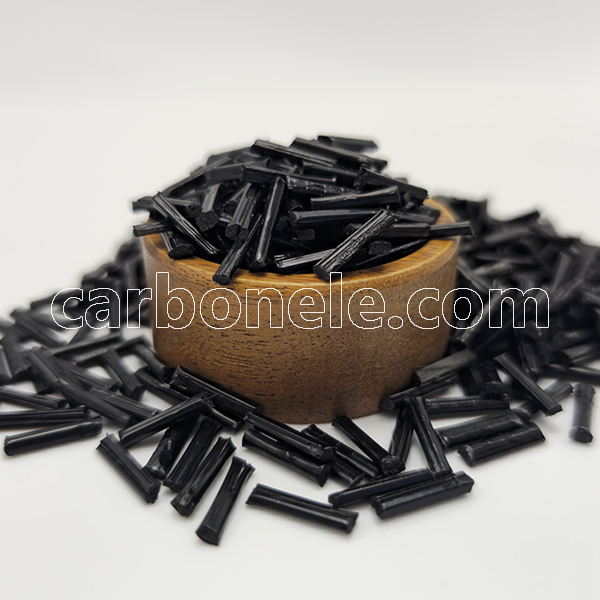
PA66 LCF long carbon fiber composite material
PA66 LCF is a novel composite material with outstanding application possibilities and performance in many different sectors. Although cost-benefit analysis reveals its long-term operational economic benefits, its recyclability offers fresh concepts for sustainable development. The stability of PA66 LCF under demanding application circumstances shows its dependability in hostile surroundings.
The special mix of qualities of PA66 LCF makes it more competitive in certain uses than other composite materials. At last, the particular application examples of PA66 LCF in the domains of electronics, medical, aerospace, and automotive prove its adaptability and flexibility. PA66 LCF is projected to become increasingly significant in future materials research and industrial applications as long as technology is developing and application fields are expanding.
Feature Product
-
PA12 LCF30 for Drone Fuselages & Wings
What do you know about PA12 LCF30? PA12 ...
-
Competitive Price PA6 LCF30 Composites
What’s it? PA6 LCF30, which stands...
-
ABS CF10 Compound ABS 10%CF Thermoplastic Compo...
What’s ABS CF10? ABS CF10 refers t...








